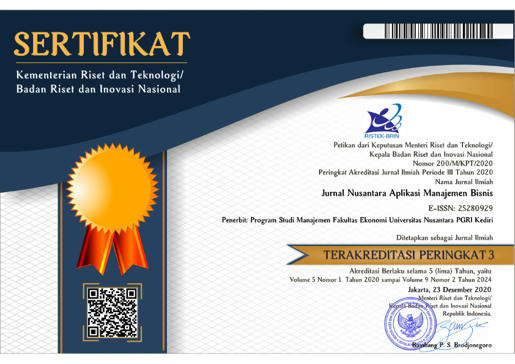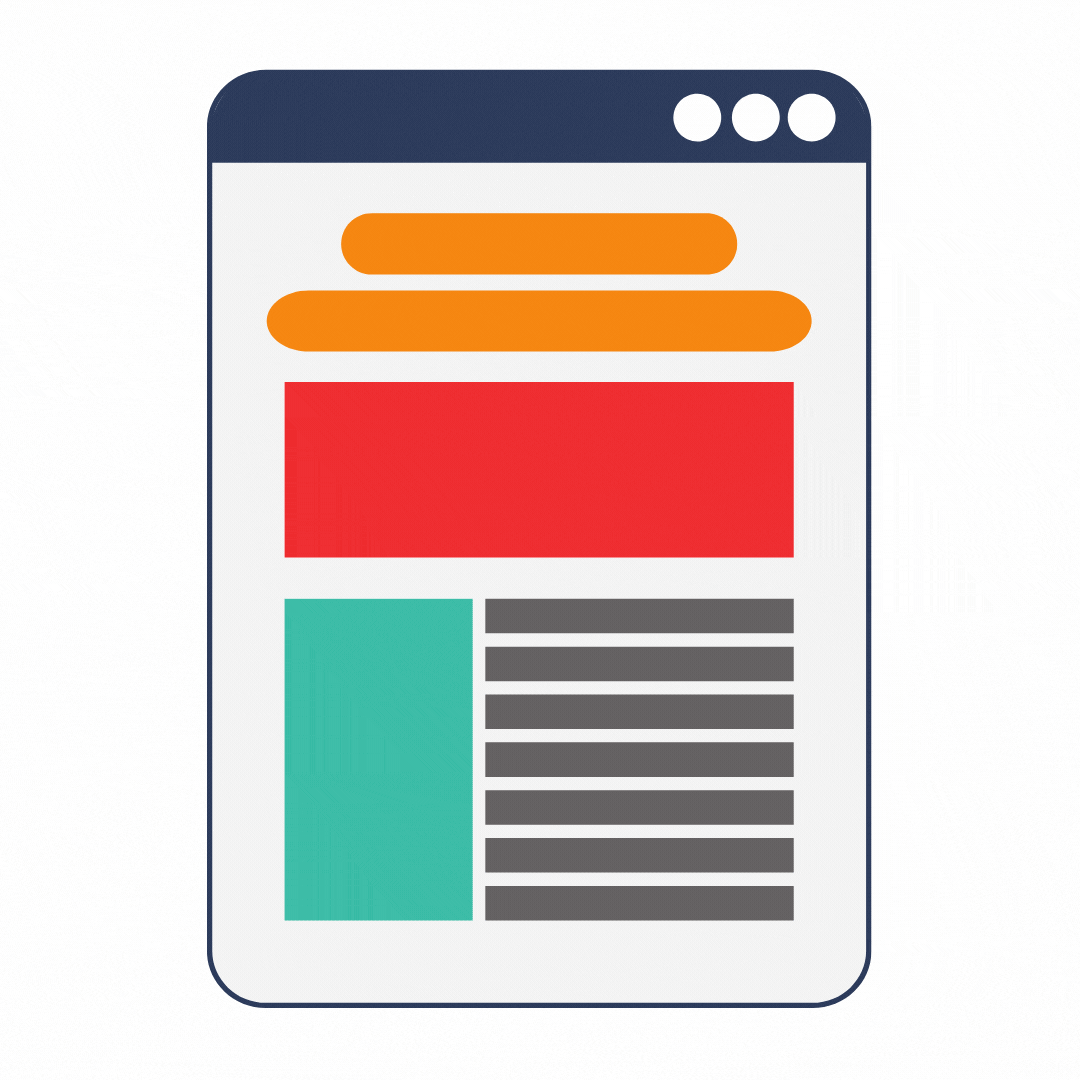Dampak persepsi manfaat dan persepsi risiko terhadap fintech continuance intention pada generasi milenial di Surabaya
DOI:
https://doi.org/10.29407/nusamba.v5i1.14225Keywords:
fintech, benefits, risks, fintech continuance intentionAbstract
Perkembangan industri fintech yang bertumbuh pesat tidak terlepas dari para pemakai yang menggunakan fintech tersebut. Keberlangsungan fintech sangat tergantung dari pemakaian secara berkelanjutan dari pemakai. Penelitian ini menguji pengaruh dari persepsi manfaat dan persepsi risiko terhadap fintech continuance intention pada generasi milenial yang rentang usia 20 – 40 thn. Pengujian dilakukan menggunakan Partial Least Square dengan jumlah sampel 78 orang. Hasil menunjukkan bahwa persepsi manfaat berpengaruh signifikan terhadap fintech continuance intention sedangkan persepsi risiko tidak bepengaruh signifikan terhadap fintech continuance intention pada generasi milenial.
Downloads
References
Ajzen, I. and Fishbein, M. (1977). Attitude-Behavior Relations: A Theoretical Analysis And Review Of Empirical Research. Psychological Bulletin, 84(5), 888-918.
Arner, D.W., Barberis, J.N. & Buckley, R.P. (2015). The Evolution Of Fintech: A New Post-Crisis Paradigm?. University of Hong Kong, Hong Kong. 1-46
Barberis, J. (2014). The Rise of Fintech: Getting Hong Kong To Lead The Digital Financial Transition In APAC. Fintech Report, Fintech HK.
Chan, R. (2015). Asian Regulator Seek Fintech Balance. Finance Asia, September 4, available at: www. financeasia.com/News/401588,asian-regulators-seek-fintech-balance.aspx
Chiang, H.-S. (2013). Continuous Usage Of Social Networking Sites: The Effect Of Innovation And Gratification Attributes. Online Information Review, 37(6), 851-871.
Cao, X., Lingling, Y., Zhiying, L., Mingchuan, G., and Adeel, L. (2017). Understanding Mobile Payment Users’ Continuance Intention: A Trust Transfer Perspective. Internet Research, 28(2), 456-476.
Farivar, S. and Yuan, Y. (2014). The Dual Perspective Of Social Commerce Adoption. Proceeding In SIGHCI, 1-6.
Garvey, K. et al. (2017). The 2nd Asia Pacific Region Alternative Finance Industry Report - Cultivating Growth (September). Cambridge Centre for Alternative Finance (CCAF). London : University of Cambridge.
Hair, J. F., Hult, G. T. M., Ringle, C. M., & Sarstedt, M. (2017). A Primer on Partial Least Squares Structural Equation Modeling. 2nd Ed. Thousand Oaks: Sage.
https://www.ojk.go.id/id/kanal/iknb/data-dan-statistik/fintech/default.aspx
Kim, C., Mirusmonov, M. & Lee, I. (2010). An Empirical Examination Of Factors Influencing The Intention To Use Mobile Payment. Computers in Human Behavior, 26 (3), 310-322.
Kuo-Chuen, D.L. & Teo, E.G. (2015). Emergence Of Fintech And The LASIC Principles, Journal of Financial Perspectives, 3(3), 24-36.
Lee, I., & Shin, Y. J. (2018). Fintech: Ecosystem, Business Models, Investment Decisions, And Challenges. Business Horizons, 61(1), 35– 46.
Lee, M.C. (2009). Factors Influencing The Adoption Of Internet Banking: An Integration Of TAM And TPB With Perceived Risk And Perceived Benefit. Electronic Commerce Research and Applications, 8(3), 130-141.
Leong, K. & Sung, A. (2018). Fintech (Financial Technology): What Is It And How To Use Technologies To Create Business Value In Fintech Way?. International Journal of Innovation, Management and Technology, 9(2), 74-78.
Liang, T.-P. & Yeh, Y.-H. (2011). Effect Of Use Contexts On The Continuous Use Of Mobile Services: The Case Of Mobile Games. Personal and Ubiquitous Computing, 15 (2), 187-196.
Nizar, Muhammad. (2017). Teknologi Keuangan (Fintech) : Konsep dan Implementasinya di Indonesia. 5.
Oliveira, T., Thomas, M., Baptista, G. & Campos, F. (2016). Mobile Payment: Understanding The Determinants Of Customer Adoption And Intention To Recommend The Technology. Computers in Human Behavior, 61, 404-414.
Ozturk, A.B., Bilgihan, A., & Saba, S. (2017). Understanding The Mobile Payment Technology Acceptance Based On Valence Theory A Case Of Restaurant Transactions. International Journal of Contemporary Hospitality Management, 29(8), 2027-2049.
Tam, C. and Oliveira, T. (2017), “Understanding mobile banking individual performance: the deLone & McLean model and the moderating effects of individual culture”, Internet Research, Vol. 27 No. 3, pp. 538-562
Teo, A.C., Tan, G.W.H., Ooi, K.B., Hew, T.S. & Yew, K.T. (2015). The Effects Of Convenience And Speed In M-Payment. Industrial Management & Data Systems, 115(2), 311-331.
Ryu, Hyun-Sun. (2017). What Makes Users Willing Or Hesitant To Use Fintech? : The Moderating Effect Of User Type. Industrial Management & Data Systems, 118(3), 541-569.
Xiongfei, C., Lingling, T., Zhiying., L., Gong., M., & Adeel., L. (2017). Understanding Mobile Payment Users’ Continuance Intention: A Trust Transfer Perspective. Internet Research, 28 (2), 456-476.
Zavolokina, L., Dolata, M. & Schwabe, G. (2016). Fintech – What’s In A Name ?. Proceedings in International Conference on Information Systems, Dublin, 1-19.
Zhou, T. (2015). An Empirical Examination Of Users’ Switch From Online Payment To Mobile Payment. International Journal of Technology and Human Interaction, 11(1), 55-66.
Downloads
Published
Issue
Section
License
Authors who publish with this journal agree to the following terms:
- Copyright on any article is retained by the author(s).
- The author grants the journal, the right of first publication with the work simultaneously licensed under a Creative Commons Attribution License that allows others to share the work with an acknowledgment of the work’s authorship and initial publication in this journal.
- Authors are able to enter into separate, additional contractual arrangements for the non-exclusive distribution of the journal’s published version of the work (e.g., post it to an institutional repository or publish it in a book), with an acknowledgment of its initial publication in this journal.
- Authors are permitted and encouraged to post their work online (e.g., in institutional repositories or on their website) prior to and during the submission process, as it can lead to productive exchanges, as well as earlier and greater citation of published work.
- The article and any associated published material is distributed under the Creative Commons Attribution-ShareAlike 4.0 International License












